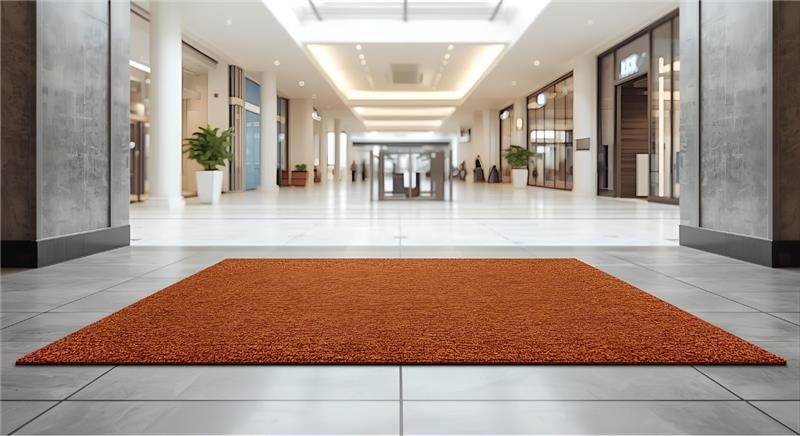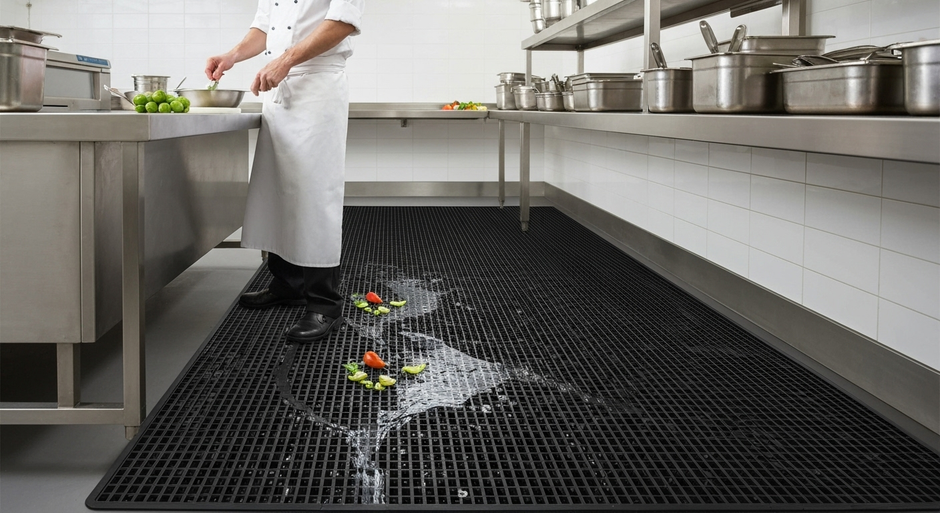Hospitals are extremely busy and demanding environments, requiring hospital and medical matting in many different areas for a variety of uses. The right floor mats can make a significant difference in maintaining hygiene, improving safety, and enhancing staff productivity. In this blog, we provide a detailed overview of floor mats for hospitals to help you determine the best solution for your specific needs.
Uses of Floor Mats for Hospitals
Improve Hygiene Levels
Hospitals are environments where cleanliness and hygiene are paramount. Controlling the spread of bacteria and germs is crucial to maintaining a safe space for patients, visitors, and staff. Entrance mats play a vital role in stopping dirt from entering the hospital, both from foot traffic and wheeled traffic. The more dirt that is kept out, the fewer bacteria and germs are brought in, reducing the risk of infections.
Specialist mats, such as anti-microbial mats, can also help to kill germs that come into contact with the mat. These mats are infused with antimicrobial agents that inhibit the growth of bacteria, fungi, and other harmful microorganisms, ensuring a cleaner hospital environment.
Improve Safety
Hospitals have many areas where floors can become hazardous due to spills, moisture, and high traffic. Hard floors, especially in areas where liquids are involved, can become extremely slippery, increasing the risk of slips, trips, and falls. Mats placed in strategic areas help mitigate these risks by providing a slip-resistant surface and absorbing spills.
Rubber-backed mats with high traction properties are particularly effective in preventing falls. They provide a secure surface underfoot and remain in place even in high-traffic areas.

Spillage Containment
Spills in hospitals are inevitable, whether from liquids, chemicals, or other substances. Mats with high absorbency help contain these spills, preventing them from spreading to surrounding floors. This is especially useful in areas like washrooms, laboratories, and food service areas where spills are common. Mats that hold onto spills until they are cleaned help maintain a safer environment for everyone.
Increase Worker Productivity
Many hospital jobs require staff to stand or walk around in the same areas for long hours. Surgeons, nurses, receptionists, and other medical professionals spend extensive time on their feet, leading to fatigue and discomfort. Anti-fatigue mats are designed to reduce stress on joints and muscles, promoting better posture and circulation. These mats can help keep staff more alert and comfortable, ultimately improving their performance and reducing fatigue-related errors.
Areas Where Floor Mats Are Used in Hospitals
Entrances
Entrance matting is essential for hospitals as it acts as the first line of defence against dirt, moisture, and debris. Effective entrance matting can stop up to 90% of dirt from entering the facility. Hospitals typically have multiple entrances with high footfall, requiring high-quality entrance mats that are durable and effective over time.
A well-designed entrance matting system should consist of:
-
Scraper Mats: Positioned outside the entrance to remove coarse dirt and debris.
-
Absorbent Mats: Used inside the entrance to capture moisture and finer particles.
-
Barrier Mats: To provide additional protection in high-traffic areas.
Entrance mats should also accommodate wheeled traffic, such as wheelchairs, stretchers, and trolleys. Bevelled edges or low-profile mats are essential to ensure accessibility for all individuals, including those with mobility impairments.
Bedside Areas
Patients often have difficulty moving in and out of bed, making bedside areas potential fall zones. Placing mats beside beds can help reduce the risk of accidents, particularly for patients prone to falls due to mobility issues or medical conditions.
Anti-microbial mats are particularly useful in these areas as they prevent the spread of germs and bacteria. Additionally, cushioned mats provide extra comfort and support, reducing the impact in case of accidental falls.
Theatres and Reception Areas
Medical staff in operating theatres and receptionists often stand for extended periods. Anti-fatigue mats are essential in these areas to provide comfort and prevent leg, back, and foot fatigue. Standing for prolonged periods on hard floors can lead to musculoskeletal issues, affecting overall well-being and work efficiency.
Anti-fatigue mats used in these areas should be:
-
Ergonomically designed to provide proper support.
-
Easy to clean and maintain to meet hospital hygiene standards.
-
Slip-resistant to enhance safety in busy workspaces.

Cleaning Areas and Washrooms
Areas where water, cleaning agents, and other liquids are frequently used, such as washrooms, handwashing stations, and scrub areas, pose a slip hazard. Placing mats in these areas helps absorb excess moisture and prevent falls.
Mats for washroom and cleaning areas should be:
-
Highly absorbent to soak up spills quickly.
-
Slip-resistant to prevent accidents.
-
Easy to clean to maintain hygiene standards.
Vending Machines and Food Areas
Food and drink spills in vending machine areas and hospital cafeterias can create potential hazards. Mats placed beneath vending machines and around food service areas help manage spills, reducing the likelihood of slips and falls.
Food service mats should be:
-
Resistant to grease and stains to maintain cleanliness.
-
Durable to withstand high foot traffic.
-
Antimicrobial to prevent the growth of bacteria in food-preparation zones.
Cleaning and Maintenance of Hospital Mats
Mats used in hospitals must be easy to clean and maintain to prevent them from becoming a breeding ground for germs. Since they trap dirt, bacteria, and spillages, regular cleaning is essential to uphold hygiene standards.
Many hospital mats are launderable, allowing them to be placed in washing machines for thorough cleaning. Some mats are designed to be sanitized using autoclave machines, which completely sterilize and disinfect them. This ensures that mats remain free of harmful contaminants and safe for hospital use.
Choosing the Right Floor Mats for Hospitals
Selecting the right floor mats for a hospital depends on various factors, including the specific application, foot traffic levels, and cleaning requirements. Here are a few key considerations when choosing hospital floor mats:
-
Durability: Mats in high-traffic areas should be made from robust materials that can withstand frequent use.
-
Slip Resistance: Ensuring mats have a high coefficient of friction to prevent slips and falls.
-
Ease of Cleaning: Mats should be easy to wash, sanitize, and maintain to uphold hospital hygiene standards.
-
Comfort: Anti-fatigue mats should provide adequate support for staff standing for long hours.
-
Accessibility: Mats should have bevelled edges or low profiles to allow smooth movement for wheeled traffic.
Need Help Choosing the Right Mat?
Every hospital has unique requirements when it comes to floor matting solutions. At Mats4U, we specialize in providing high-quality mats designed to enhance safety, hygiene, and comfort in medical environments. Our team is here to help you find the perfect mat for your specific needs.
For expert advice and assistance, call us on 0121 313 6748 or reach out via Live Chat. We’re happy to help you choose the best hospital floor matting solution for your facility!









